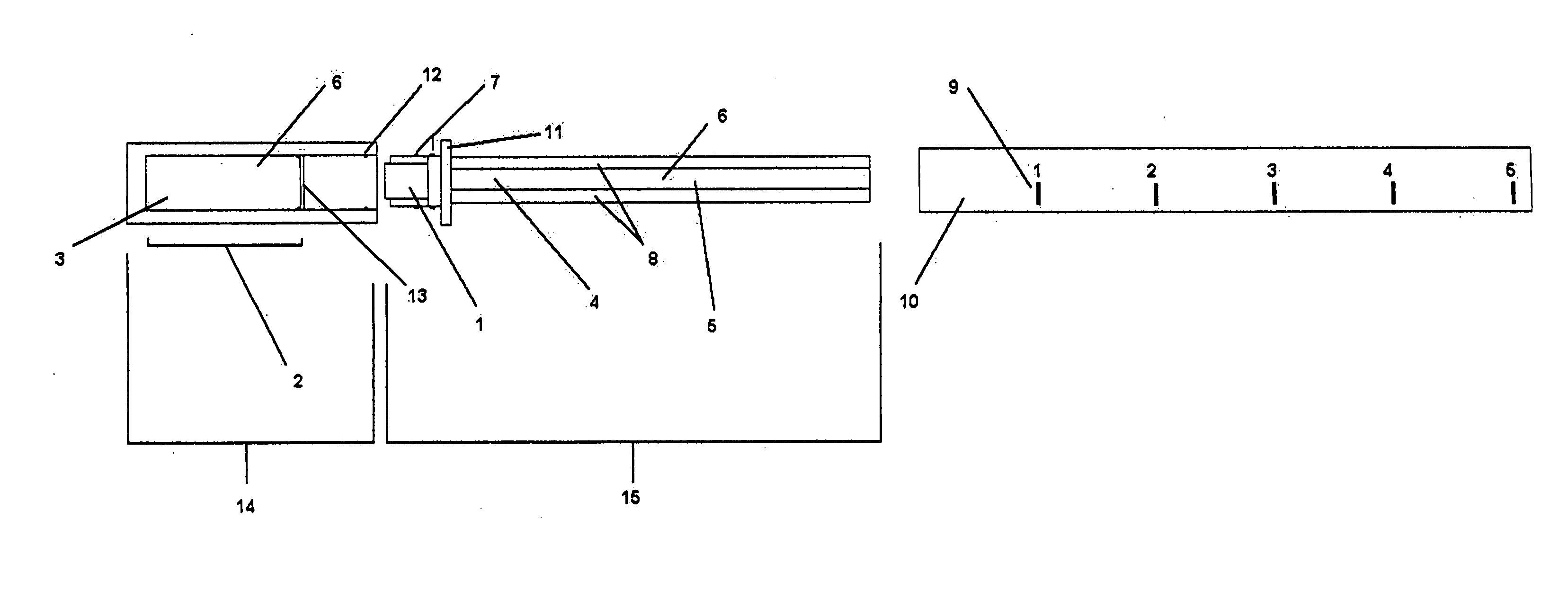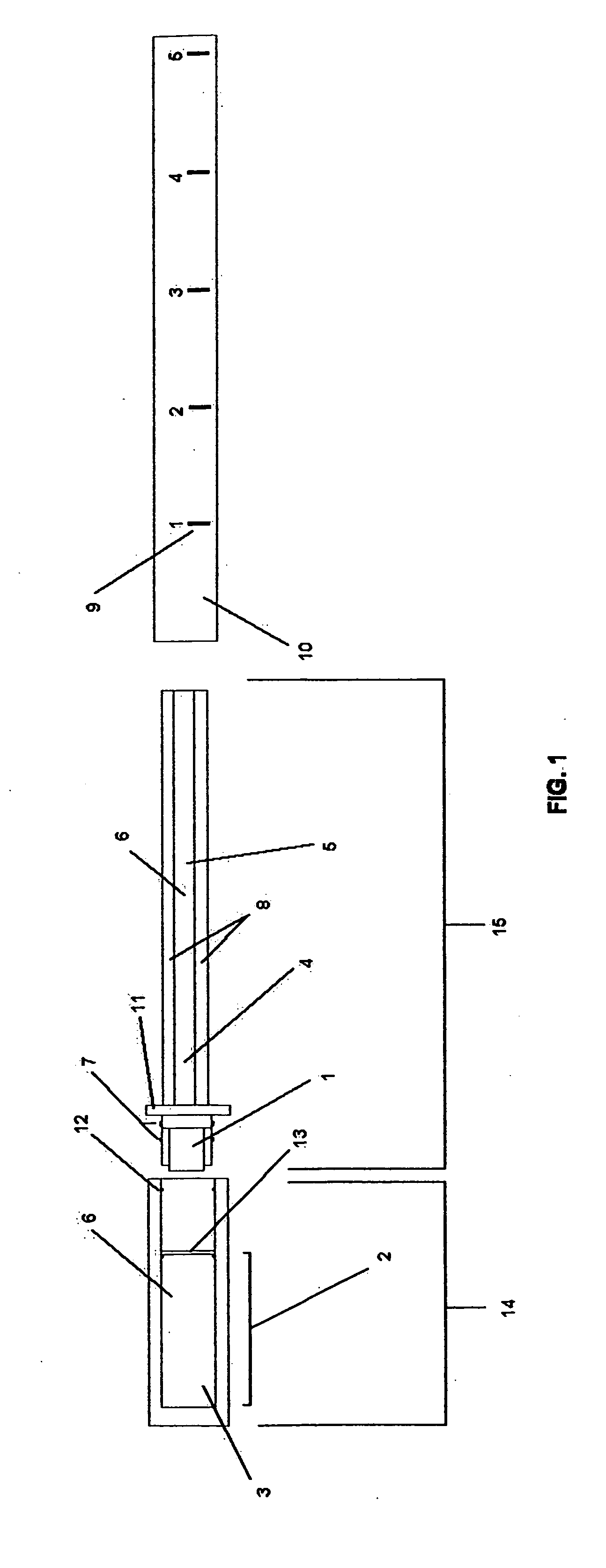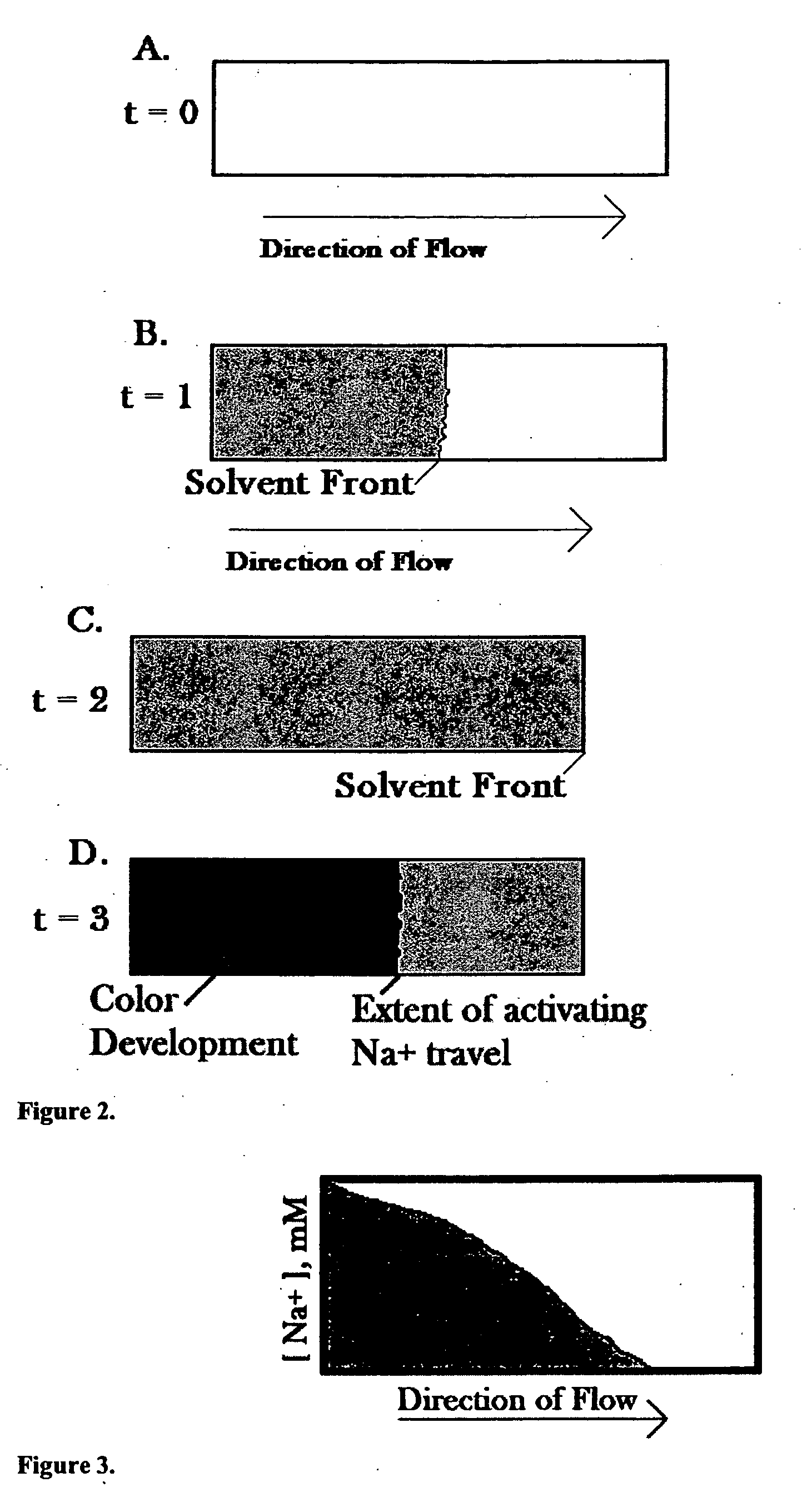Systems and methods for measuring sodium concentration in saliva
a technology of sodium concentration and saliva, which is applied in the field of methods and systems for determining the concentration of sodium in saliva, can solve the problems that the patent has not prevented other manufacturers from using microcrystalline cellulose, and achieve the effects of improving direct or indirect control, non-invasive, and disposabl
- Summary
- Abstract
- Description
- Claims
- Application Information
AI Technical Summary
Benefits of technology
Problems solved by technology
Method used
Image
Examples
Embodiment Construction
[0061]FIG. 1 illustrates one possible embodiment, wherein the cap 14 is comprised of a chromatography chamber 2, which contains the chromatic buffer 3 (which may or may not contain a calorimetric substrate for the enzyme 6), and a foil vapor barrier 13. Additionally, the cap has protrusions 12, which will interface with protrusions 7 on the plastic collar 11.
[0062] The diagnostic mechanism 15 is comprised of a sample collector 1, which is mounted on the plastic collar 11. Also attached to the plastic collar is the solid state chromatography medium 4 with embedded enzyme 5. The solid state chromatography medium may or may not contain a calorimetric substrate for the enzyme 6. Additionally, one or more controls 8 may also be located in this mechanism.
[0063] The body 10 is made of a transparent material with low or zero vapor permeability. Printed or molded into this body 10 are physical markers that correlate to sodium concentration 9.
[0064] As shipped to the user, the cap 14 is at...
PUM
| Property | Measurement | Unit |
|---|---|---|
| mechanical | aaaaa | aaaaa |
| physical barrier | aaaaa | aaaaa |
| freezing | aaaaa | aaaaa |
Abstract
Description
Claims
Application Information
 Login to View More
Login to View More - R&D
- Intellectual Property
- Life Sciences
- Materials
- Tech Scout
- Unparalleled Data Quality
- Higher Quality Content
- 60% Fewer Hallucinations
Browse by: Latest US Patents, China's latest patents, Technical Efficacy Thesaurus, Application Domain, Technology Topic, Popular Technical Reports.
© 2025 PatSnap. All rights reserved.Legal|Privacy policy|Modern Slavery Act Transparency Statement|Sitemap|About US| Contact US: help@patsnap.com



